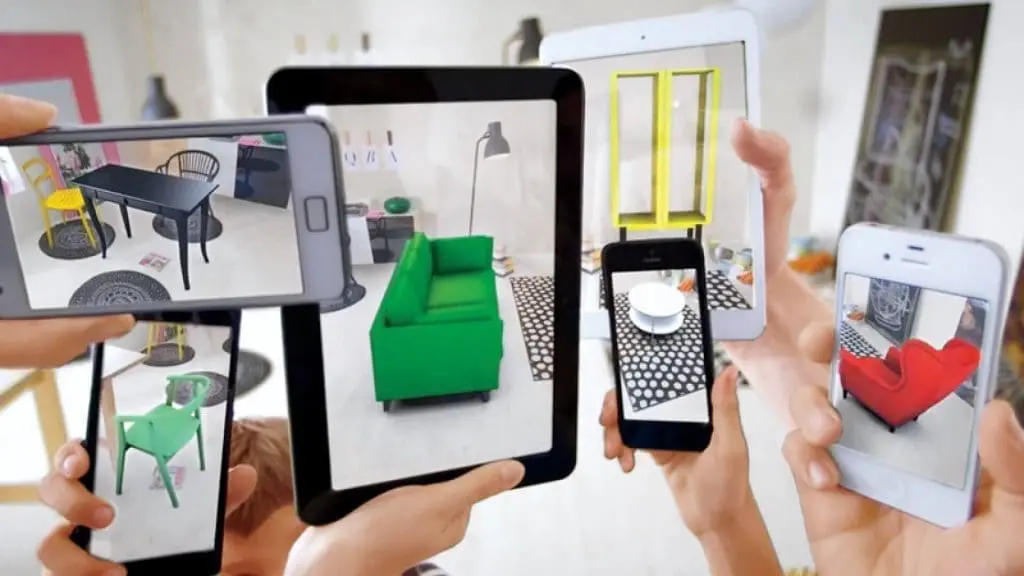“The most important thing in communication is hearing what isn’t said” ~ Peter Drucker.
Designers and Presenters of the construction field have implemented the quote practically concerning their designs. The designs are communicated to the user in realtime even if they are not in any tactile phase.
An astonishing range of technological advancements have achieved presenting/ experiencing something which does not exist in physical form. Augmented Reality and Virtual Reality have been the tools to envision the unreal. The usual application of AR/VR includes molding the design in actual conditions and allowing the user to virtually experience it, even before the design takes any shape in reality.
How do we distinguish Augmented reality and Virtual reality?
The major difference between the two of them is the interaction of digital projections of design and the vision of the user. Digital projections are the elements of digital design that can be seen through virtual vision. The vision of a user can be expressed as what they can perceive of their visual frame.
Augmented reality adds digital elements into the live frame of vision through any device like a camera of a smartphone or any AR goggles.

Figure 1: Digital Elements of design projected onto the live frame through camera
Whereas, Virtual Reality Projections restricts visual interactions from the real world by completely immersing the user into the virtual world.

Figure 2: User experiencing Virtuality Reality, virtual projections are shown on the screen for others.
Whereas, Virtual Reality Projections restricts visual interactions from the real world by completely immersing the user into the virtual world.
Further interventions of Building Information Modelling (B.I.M.) suggested planned working and monitoring of project management. BIM raised the demand for visualizing facts and figures through diagrams and projections.
Clients demand better visualization and foreseen predictions of the design and its timeline. While there are many stakeholders in a project, thus any discrepancy during communication can lead to difficulty in collaborative workflow.
This is the point where visualizations become a handy tool.Early experiences in the construction field suggest that there is a rise in the demand to visualize and maintain the workflow. Projects in early times were executed through schematics on paper as per designs by professionals. These were upgraded to planar projections on paper like 3D views and cinematic frames for better visualization of planar schematic of plans.
Direct Benefits of A.R. & V.R.
- Effective Project Handling
- Better Visualisations
- Coordinating Multiple Users in a Single Environment
- Enhanced Communication between working tiers
- Research and Documentations Presentation
- Training and Recruitment Tool
- Saving Cost by avoiding Re-Work
Where and How Can Augment Reality and Virtual Reality Technologies be used in Construction
Technologies can be used in numerous ways according to needs and operations according to the condition. However, broad classifications of workflows and categories for usage of Augmented and Virtual Reality Technologies are listed as follows:
1. Collaborating Stakeholders Through Design Support
Clients can be engaged in the process of designing through design visualization to examine real-scale virtual models. By observing the immersive environment, the expectations of stakeholders can be aligned with the actual design.
Augmented Reality Digital Projections can be through supported camera Applications for creating virtual tours of projects for better visualization. Clients can use Virtual Reality Wearable Technology for experiencing any walkthrough animation of a project.
2. Planning the Project
Previewing the building before the construction phase can offer a chance to designers and clients to make alterations to the design. This extent of involvement in the early phases of construction prevents any costly alterations at a later stage due to a lack of planning and visualization.
3. Automation
Augmented reality can be used to measure real-time frames and allow construction workers to measure dimensions of built units and compare them with designed units. This allows a worker to identify any discrepancies to prevent any delays and cost overruns.
4. Synchronized Modifications
Technology offers the ability to make changes in the virtual model while keeping a view intact. Within a few taps, relocation of any single element implies changes to the whole model simultaneously.
5. Access Control
A.R. and V.R. give the user the authority to control the layers and elements of design they wish to see. Users can toggle information layers to experience the relevant information according to their needs.
For example, A plumbing expert can overlay plumbing layouts in real-time for effective understanding. The same can be applied for different experts like electrical consultants, Mechanical, HVAC, and collected information can be overlaid for experiencing finished product.
6. Training and Safety Mocks
A.R. can be used for simulating hazardous environments and conditions for training and testing purposes. Features like these can ensure the training of workers to handle equipments and conditions when there might be any need.
Applications & gadgets for Experiencing Augmented Reality and Virtual Reality in Construction
After knowing the benefits and implementations of these technology-driven Visualisation Methods, One must be familiar with the Gadget based Applications that are available for experiencing virtual models. These applications import models from BIM engines and 3D model software like Revit, Archicad, Rhino, and Sketchup to transform virtual models into virtual experiences.
Here is a list of few applications that are available for porting to the virtual world:
- UNREAL ENGINE
- UNITY
- FUZOR
- TWIN MOTION
- MAGIC LEAP
- MORPHOLIO AR SKETCHWALK
- MEASURE APPS: AIRMEASURE for IOS, MEASUREKIT
- AUGMENT
- FOLOGRAM
- GAMA AR
- ARki
– Anshul Kulshrestha





